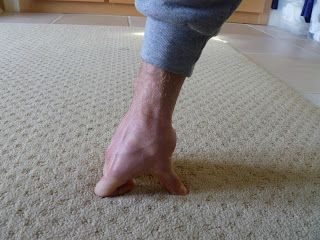Let’s breakdown the typical 50 minute client workout:
· 5-10 min cardio warm-up
· 5-10 Specific/Dynamic warm-up
· 20-30 min main workout sets
· 5-10 min warm down/ stretching
Let’s also look at a basic format for an athlete training:
· 5-20 min general warm-up
· 5-20 min specific warm-up
· 20-60 min main set
· 5-20 min warm down / stretching
Both workouts follow the same time progression in order to be successful. Most workouts will begin with a client or athlete training in a general warm-up to prepare for the demands of the workout. These preparations include the build-up of heart stroke volume, the dilation of capillaries in both the cardiovascular and the circulatory systems, and an increase in polarity in the nervous system to allow for proper body mechanics under the training conditions. All the systems of the body increase activity during this time including the release of synovial fluid to the joints, the increase of hormonal activity such as adrenaline and testosterone, the increase in body temperature as a response to the shift in metabolic function, and the digestive system reacts to release discomforts that might inhibit the body from performance (often requiring pre-race/pre-workout bathroom breaks.)
The athlete’s workout is predicated by having longer warm-up steps to allow the body to accommodate higher in levels of workout volume and intensity; a product of increase output from the organs of the body. While the athlete’s system is more efficient at providing fuel to its body and managing the stress levels associated with a more demanding workout, we should not forget the objective of a workout is to accomplish the tasks of the main set. Simply put, unless we are purposely trying to string out a workout for increased calorie burning time, the bodily resources should be preserved through the warm-up (both general and specific) in order to accomplish the main set with the appropriate resources. It would not make sense to fatigue yourself or your athlete before a competition, game, or race; yet many coaches and trainers believe that this is the best way to prepare the competitor. Let’s take a look at an example of a typical competitive club swimming meet schedule for a single day.
· 1500 yards general pre-meet warm-up, various strokes
· Race #1 : 200 Individual Medley
o 300 warm-up, 500 cool down
· Race #2 : 100 Butterfly, followed 8 minutes later by Race #3 500 Freestyle
o 400 warm-up, 250 in between, 200 warm-down
· Race #4: 50 Freestyle
o 500 warm-up, 300 warm-down
· Race #5: 100 Breaststroke
o 300 warm-up
· 500 Meet warm-down
While swimming is based on perfecting technique using repetitive yardage, the competitor, who only had 5 races this day covering 950 yards, has swum at least 5,700 yards total or 3.2 miles. Track athletes habitually cover miles during race day and max speed day workouts. Football games are often preceded by nearly a half hour of running warm-up drills. Basketball warm-up drills involve athletes running half the length of the court many times over, yet during games minutes are tracked and minimized. While these are positives for calorie expenditure, allowing full systemic activation and warm-up, they often times cause an extreme amount of energy loss; energy that could be better allocated to competing at a higher level. While I do not condone the minimization of warm-up as it has been linked to injury numerous times, I would like to have trainers and coaches reconsider the most appropriate mode of warm-up for their trainees.
In this article, I would like to examine the option of passive warm-up techniques as they relate to the issue at hand. First, passive warm-up is defined as increasing the bodily temperature by external sources in order to activate metabolic functions in the
· Heat Packs
· Sauna Suit
· Dry Sauna
· Hot Tub
· Steam Room





















